Cooking process
In such a French delicacy, as a meringue, it is impossible not to fall in love! And it’s not just a delicate taste and airy texture of dessert, but in a fairly simple way of cooking. Everything is really easy if you know a few important rules and do not forget about them.
First, the dishes in which you whip the whites should be perfectly clean and dry, that is, not a single drop of fat or water can be there. Otherwise, the squirrels will not break, so at least everyone says. I always remember this rule, so I have never encountered the problem of “non-breeding” of proteins.
Secondly, a particularly important step is the separation of protein from the yolk. It should be done very neatly and it is preferable to break each egg into an empty bowl, so that in case of which one yolk does not spoil all the proteins (if you cook from several eggs). And if in the beginning something will not work, you can always prepare yourself an omelet from failed eggs 🙂
Today we are preparing a meringue in a multivariate, which is more troublesome than cooking in the oven. However, if you do not need a large portion, and there are no other options – the multivarque is perfect! Readiness is checked in appearance: the meringue should be completely dry, get a beige shade. At the top may appear light cracks – it’s not scary.
In addition, ready-made meringue pairs can be douched among themselves with boiled condensed milk or any other thick cream – real cakes will turn out! So, let’s start cooking.
To prepare a meringue in a multivark, we need the following ingredients.
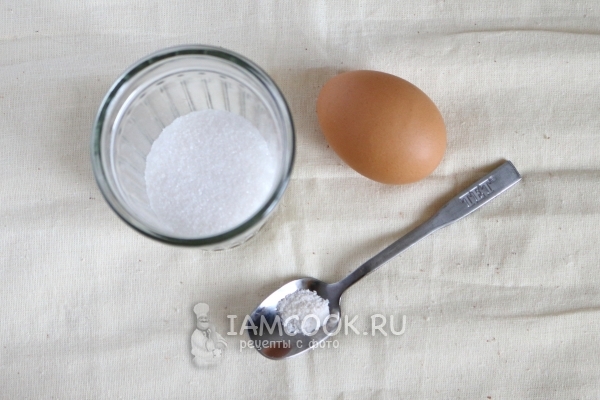
My egg and carefully separates the yolk from the protein. We only need protein, which we put into a clean dry container and start whipping at a low speed mixer with a pinch of salt, which will help to fix future peaks of whipped protein.
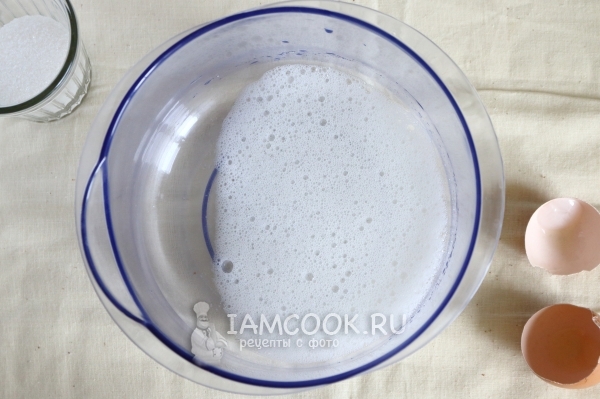
As we whip, we notice that the protein becomes snow-white, is filled with oxygen, from which bubbles form, and becomes more magnificent. We beat for about 3-4 minutes and admire this beauty.
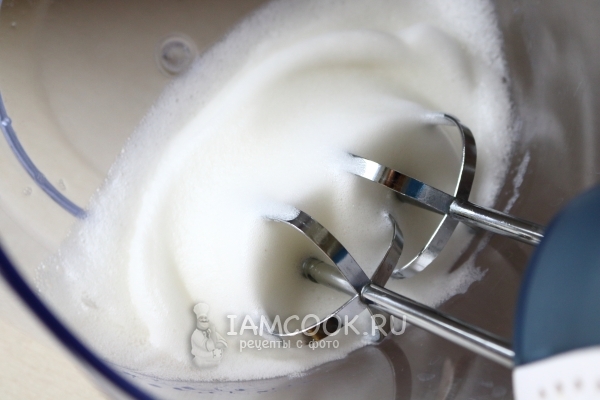
Then we begin to add sugar in portions, whilst continuing to whip and increase the speed of rotation. Now the mass on the eyes begins to thicken and it is even better to keep the shape. We beat for 5-7 minutes – as they say, to strong peaks.

This means that the protein base for the meringue will not drip and drain off the mixer nozzles. In a bowl, she will remain embossed and keep her shape.

To be sure to check the availability of proteins, turn the bowl upside down – the mass should stay inside and not escape anywhere.
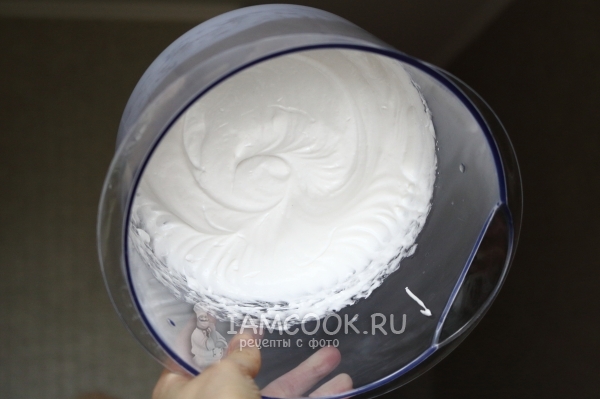
We spread the foil on the bottom of the multivarquet, so that it is easy to remove the products from the mold. We set off the future bezeshki with a dessert spoon. At me from the given quantity of ingredients 4 enough volumetric products have turned out. And more, unfortunately, in my multivark and would not fit.
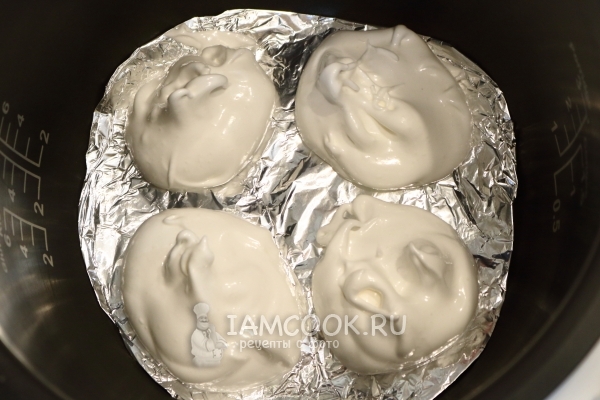
We put the “Baking” mode and prepare as follows: after the multivarker has heated up, close the lid, but approximately every 15 minutes we open the multivark to let off steam. So it took me 3 hours to completely mute my meringue. In addition, I left the meringue in the multivark at night, where they reached their full potential.

We remove the finished products with the foil, carefully remove it and disconnect the meringue among ourselves, if necessary (there is nothing to worry about that they hardly parted during cooking and stuck together).
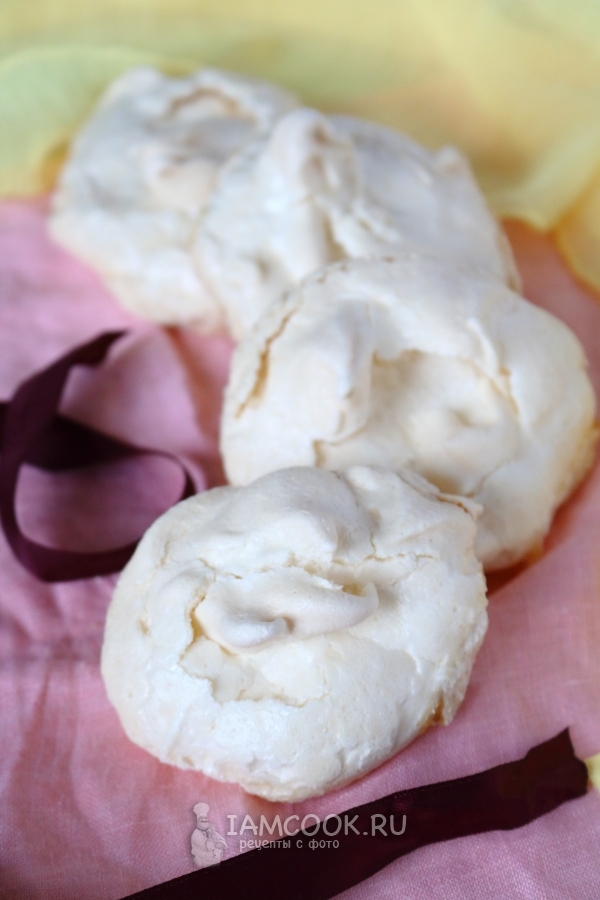
It turns out that such a delicious dessert can be prepared in a multivarquet! Have a nice tea!
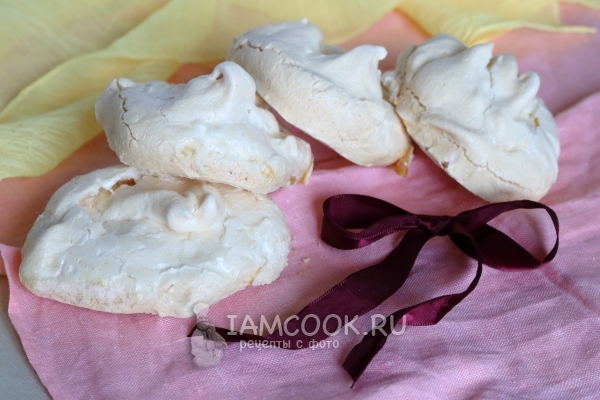
Bézé in the multivariate
A light and airy French dessert can also be prepared in a multivariate! The result of ready meringues pleasantly surprises and pleases the eye … and language!
Ingredients
Egg – 1 pc.
Sugar – 1/3 cup
Salt – pinch
Cooking process
In such a French delicacy, as a meringue, it is impossible not to fall in love! And it’s not just a delicate taste and airy texture of dessert, but in a fairly simple way of cooking. Everything is really easy if you know a few important rules and do not forget about them.
First, the dishes in which you whip the whites should be perfectly clean and dry, that is, not a single drop of fat or water can be there. Otherwise, the squirrels will not break, so at least everyone says. I always remember this rule, so I have never encountered the problem of “non-breeding” of proteins.
Secondly, a particularly important step is the separation of protein from the yolk. It should be done very neatly and it is preferable to break each egg into an empty bowl, so that in case of which one yolk does not spoil all the proteins (if you cook from several eggs). And if in the beginning something will not work, you can always prepare yourself an omelet from failed eggs 🙂
Today we are preparing a meringue in a multivariate, which is more troublesome than cooking in the oven. However, if you do not need a large portion, and there are no other options – the multivarque is perfect! Readiness is checked in appearance: the meringue should be completely dry, get a beige shade. At the top may appear light cracks – it’s not scary.
In addition, ready-made meringue pairs can be douched among themselves with boiled condensed milk or any other thick cream – real cakes will turn out! So, let’s start cooking.
To prepare a meringue in a multivark, we need the following ingredients.
My egg and carefully separates the yolk from the protein. We only need protein, which we put into a clean dry container and start whipping at a low speed mixer with a pinch of salt, which will help to fix future peaks of whipped protein.
As we whip, we notice that the protein becomes snow-white, is filled with oxygen, from which bubbles form, and becomes more magnificent. We beat for about 3-4 minutes and admire this beauty.
Then we begin to add sugar in portions, whilst continuing to whip and increase the speed of rotation. Now the mass on the eyes begins to thicken and it is even better to keep the shape. We beat for 5-7 minutes – as they say, to strong peaks.
This means that the protein base for the meringue will not drip and drain off the mixer nozzles. In a bowl, she will remain embossed and keep her shape.
To be sure to check the availability of proteins, turn the bowl upside down – the mass should stay inside and not escape anywhere.
We spread the foil on the bottom of the multivarquet, so that it is easy to remove the products from the mold. We set off the future bezeshki with a dessert spoon. At me from the given quantity of ingredients 4 enough volumetric products have turned out. And more, unfortunately, in my multivark and would not fit.
We put the “Baking” mode and prepare as follows: after the multivarker has heated up, close the lid, but approximately every 15 minutes we open the multivark to let off steam. So it took me 3 hours to completely mute my meringue. In addition, I left the meringue in the multivark at night, where they reached their full potential.
We remove the finished products with the foil, carefully remove it and disconnect the meringue among ourselves, if necessary (there is nothing to worry about that they hardly parted during cooking and stuck together).
It turns out that such a delicious dessert can be prepared in a multivarquet! Have a nice tea!